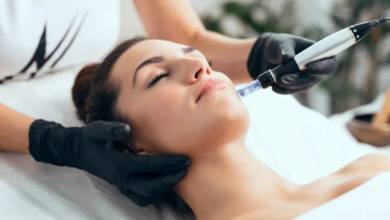
Is Zinc Oxide Safe for Skin? Here’s What the Science Says
TLDR; Zinc oxide is proven safe, gentle, and reef-friendly, with modern formulas like Blue Lizard’s offering effective UV protection without the chalky feel.
You’ve probably seen zinc oxide mentioned on sunscreen bottles for years. It shows up in mineral formulas, baby lotions, and even everyday moisturizers with SPF. Still, plenty of people aren’t sure what it really does or whether it’s safe to use daily. Is zinc oxide safe? One thing’s for sure, the online noise about the topic doesn’t help much.
Here’s the simple truth: zinc oxide has one of the best safety records of any sunscreen ingredient on the market. It’s been used for hundreds of years to protect and soothe skin, long before SPF ratings even existed. When people ask, “Are zinc oxide products safe?” dermatologists usually say it’s the gold standard.
Is Zinc Oxide Safe in Sunscreens? Experts say “ABSOLUTELY, YES!”
When you’re trying to think of an answer to “Is zinc oxide safe?”, you have to look at how widely used it is. That tells you something. Zinc oxide is a naturally occurring mineral that shields your skin from the sun. It reflects and scatters ultraviolet light rather than absorbing it, which means you get complete protection from both UVA and UVB rays.
Because it stays on the skin’s surface instead of soaking in, it’s ideal for anyone who reacts to chemical filters. That’s why mineral-based products (another name for zinc-oxide products) are created around them. Why? Because they’re gentle on the skin and tough on UV rays.
What Does Science Say About the Safety of Mineral Sunscreen?
Regulators around the world have put zinc oxide sunscreens under the microscope for decades. The FDA and the European Commission’s SCCS both agree it’s safe and effective when used in sunscreen.
Researchers have looked at how it behaves once applied, and the answer’s always the same: it stays on top of the skin. It doesn’t absorb, it doesn’t build up. It’s also non-allergenic and non-comedogenic, so it won’t clog pores or trigger acne. If your skin flares easily, zinc oxide is one of the few ingredients that tends to calm rather than irritate.
See also: Choosing the Right Dental Clinic for Your Oral Health Needs
Any Common Myths in Circulation About Zinc Oxide Sunscreens?
For something so well studied, zinc oxide still carries a few hangovers from the past. Let’s fix those now by looking at why they’re not quite as accurate as they should be.
“Zinc oxide doesn’t protect as well as chemical sunscreen.”
That’s false. Zinc oxide gives full, broad-spectrum protection all on its own, blocking both UVA and UVB. It’s the reason brands like Blue Lizard use it across every product line, as the protection it offers works whether you’re running, swimming, or just out in the garden.
“Zinc oxide sunscreens always leave a white cast.”
Full disclosure. The old ones did, but the new ones don’t. Blue Lizard’s Sheer and Sensitive lines use refined mineral particles that blend in smoothly and dry clear. No chalk, no ghost effect, just healthy skin.
“Zinc oxide isn’t reef safe.”
This myth mixes up mineral and chemical filters. Oxybenzone and octinoxate are the problem, not zinc oxide. Non-nano zinc is considered one of the most reef-friendly UV blockers available, which is why Blue Lizard formulates with it across the range.
“Zinc oxide feels thick or greasy.”
Again, it used to, but no longer. The texture has changed completely. Modern mineral sunscreens, including (especially sport ranges), go on light and absorb fast. You get protection without that sticky layer that older creams used to leave behind.
Is Zinc Oxide Safe for Your Skin? You’re Good to Use it Daily!
So, are zinc oxide-based sunscreens safe? Yes, they are, and they’re dependable, too. They’re proven to protect, gentle enough for daily use, and far kinder to the environment than many chemical filters. That’s why mineral brands are able to use it in every mineral sunscreen. If the FDA thought otherwise, it would simply be banned.
So, whether you’re training outdoors, spending the day at the beach, or chasing the kids around the park, zinc oxide does its job quietly. That’s all you need to know.




